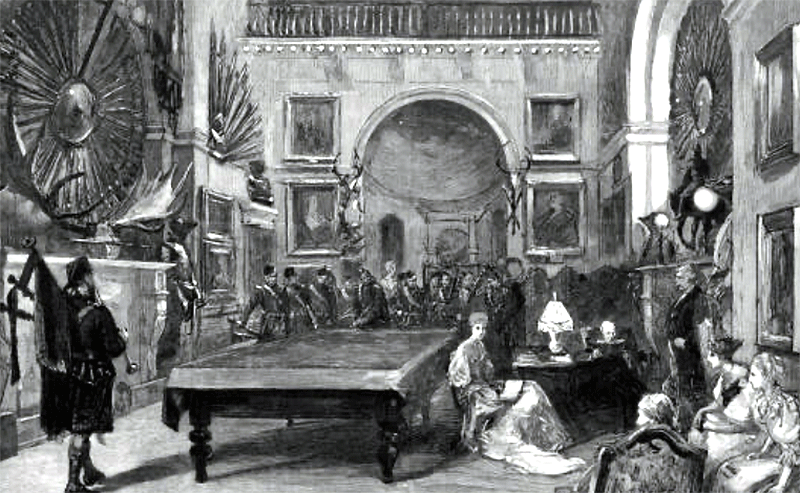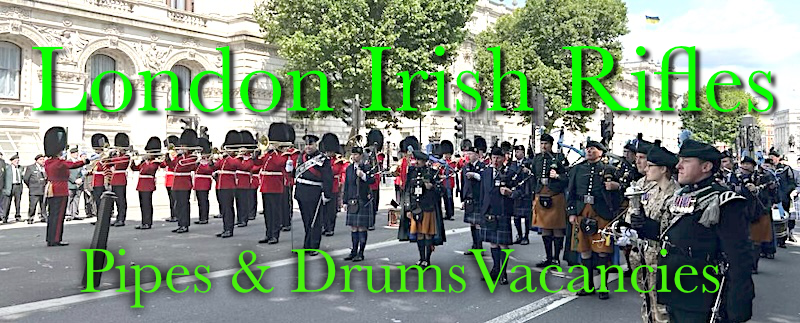
We are grateful to reader Francis Chamberlain for his research and for forwarding this article to us. It is a historically interesting account of an interview by a Victorian age journalist Henry Mayhew. Mayhew was a ‘street journalist’ who approached and interviewed street musicians, vendors, costers, thieves, prostitutes etc. of the period. This article appeared in ‘London Labour & The London Poor’, 1851. It features an (unfortunately) unnamed piper of the 93rd Regiment……
I served in India, and I was at the battles of Punjaub, 1848, and Moultan, 1849. Sir Colin Campbell commanded us at both, and says he, “Now, my brave 93rd, none of your nonsense here, for it must be death and glory here to-day”, and then Serjeant Cameron says, “The men are all right, Sir Colin, but they’re afraid you won’t be in the midst of them”, and says he, “Not in the midst of them! I’ll be there in ten minutes.” Sir Colin will go in anywhere; he’s as brave an officer as any in the service. He’s the first into the fight and the last out of it.
Although I had served ten years, and been in two battles, yet I was not entitled to a pension. You must serve twenty-one years to be entitled to 1s. 0 1/2d. I left the 93rd in 1852, and since that time I’ve been wandering about the different parts of England and Scotland, playing on the bagpipes. I take my daughter Maria about with me, and she dances whilst I play to her. I leave my wife and family in town. I’ve been in London three weeks this last time I visited it. I’ve been here plenty of times before. I’ve done duty in Hyde Park before the 46th came here.
I left the army just two years before the war broke out, and I’d rather than twenty thousand pounds I’d been in my health to have gone to the Crimea, for I’d have had more glory after that war than ever any England was in. Directly I found the 93rd was going out, I went twice to try and get back to my old regiment; but the doctor inspected me, and said I wouldn’t be fit for service again. I was too old at the time, and my health wasn’t good, although I could stand the cold far better than many hundreds of them that were out there, for I never wear no drawers, only my kilt, and that’s very thin, for it’s near worn. Nothing at all gives me cold but the rain.
The last time I was in London was in May. My daughter dances the Highland fling and the sword-dance called ‘Killim Callam’ [sic]. That’s the right Highland air to the dance — with two swords laid across each other. I was a good hand at it before I got stiff. I’ve done it before all the regiment. We’d take two swords from the officers and lay them down when they’ve been newly ground.
I’ve gone within the eighth of an inch of them, and never cut my shoe. Can you cut your shoes? Aye, and your toes, too, if you’re not lithe. My brother was the best dancer in the army, so the Duke of Argyle and his lady said. At one of the prize meetings at Blair Athol, one Tom Duff, who is as good a dancer as from this to where he is, says he, ‘There”s ne’er a man of the Macgregor clan can dance against me to-day!’ and I, knowing my brother Tom —he was killed at Inkermann in the 93rd—was coming, says I, ‘Don”t be sure of that, Tom Duff, for there’s one come every inch of the road here to-day to try it with you.’ He began, and he took an inch off his shoes, and my brother never cut himself at all; and he won the prize.

My little girl dances that dance. She does it pretty, but I’d be rather doubtful about letting her come near the swords, for fear she’d be cutting herself, though I know she could do it at a pinch, for she can be dancing across two baccy-pipes without breaking them. When I’m in the streets, she always does it with two baccy-pipes. She can dance reels, too, such as the Highland fling and the reel Hoolow. They’re the most celebrated.
Whenever I go about the country I leave my wife and family in London, and go off with my girl. I send them up money every week, according to what I earn. Every farthing that I can spare I always send up. I always, when I’m travelling, make the first part of my journey down to Hull in Yorkshire. On my road I always stop at garrison towns, and they always behave very well to me. If they’ve a penny they’ll give it to me, either English, Scotch, or Irish regiments; or I’d as soon meet the 23d Welsh Fusiliers as any, for they’ve all been out with me on service.
At Hull there is a large garrison, and I always reckon on getting 3s. or 4s. from the barracks. When I’m travelling, it generally comes to 15s [fifteen shillings] a week, and out of that I manage to send the wife 10s. and live on 5s. myself. I have to walk all the way, for I wouldn’t sit on a rail or a cart for fear I should lose the little villages off the road. I can do better in many of them than I can in many of the large towns. I tell them I am an old soldier. I don’t go to the cottages, but to the gentlemen’s houses. Many of the gentlemen have been in the army, and then they soon tell whether I have been in service. Some have asked me the stations I have been at, and who commanded us; and then they’ll say, ‘This man is true enough, and every word of it is truth.’
I’ve been in Balmoral many a dozen of times. Many a time I’ve passed by it when it was an old ruin, and fit for nothing but the ravens and the owls. Balmoral is the fourth oldest place in Scotland. It was built before any parts of Christianity came into the country at all. I’ve an old book that gives an account of all the old buildings entirely, and a very old book it is. Edinbro’ Castle is the oldest building, and then Stirling Castle, and then Perth Castle, and then Balmoral. I’ve been there twice since the Queen was there. If I’d see any of the old officers that I knew at Balmoral, I’d play then, and they might give me something. I went there more for curiosity, and I went to see the Queen come out. She was always very fond of the 93rd. They’d fight for her in any place, for there isn’t a man discharged after this war but they’re provided for.
- To be continued.

















Rab,
Firstly many thanks to Francis Chamberlain for the articles on the Scotch Piper and the Dancing Girl. The articles disclose many interesting points on both social and piping history. Having read the pieces a few times and starting to look at speech patterns and idioms etc I then began to wonder just how much of the author Mayhew features as the narrative voice as distinct from the surpringly unnamed piper. As a professional journalist would you have any observations on what journalistic insertion/ licence may be at play from an analysis of the text?
Yours aye,
Stewart
Thanks for the comment Stewart. As a ‘street reporter’ Mayhew would always have been on the look out for kenspeckle characters to interview. He probably heard our piper before he saw him and then made his approach. He may have offered him drinks or a meal and the piper would also probably have asked for pieces of silver. The two would be tête a tête in a nearby hostelry, the piper giving full rein to his memory and imagination and Mayhew scribbling away in some form of speed writing or perhaps Pitman’s shorthand which was first introduced in 1837 according to Google. It is surprising that there is no name piper’s given but that may have been a condition of the interview. Mayhew would have no way of checking the facts, but would have been content to get good, interesting, if raw, copy from a living, breathing human being whose narrative was not stifled by the social class decorum so rife at the time. I suspect the worst excesses of that narrative would have been excised or toned down, but the reporter would have been anxious to retain as much earthiness as possible, thus securing the fresh copy editors crave.
Rab,
Many thanks for your detailed response as to journalistic techniques which was helpful. Hopefully it also brought back happy memories of the expense account luncheon!
As you will gather I am suspicious as to the veracity of aspects of Mayhew’s piece. I thought it might be interesting to try and identify the surprisingly unnamed piper from the 93rd Regiment (Sutherland Highlanders) from the two battles in which he fought at Punjab and Moultan during the Sikh Wars. It transpires that the Sutherland Highlanders were not on the Indian sub continent and stationed at tha time in Great Britain after prolonged services in the Americas. Suspicions of tabloid journalism remain!
I think it would be unfair to denigrate Henry Mayhew and his organ as the ‘tabloid press’ Stewart. A consciousness of the poor and the condition of the ‘lower orders’ of mid-19th century Britain was brought to bear by writers and journalists such as Mayhew and the great Charles Dickens. (Would that he had worked our piper into one of his classics.)
I have discovered another reference to Mayhew – in Clive Aslet’s magnificent ‘Villages of Britain’- where, in 1861, Mayhew is described as writing about London’s street watercress sellers: ‘The first coster cry of a morning in the London streets’ was ‘Fresh wo-orter-creases’. Aslet says that in medieval times crushed watercress rubbed on the scalp was a cure for baldness. Seeds planted.